
Treatments for aqueous dry eye
Episodes in this series

Marguerite McDonald, MD: Tracy, let’s talk about aqueous dry eye. What are your preferred methods for treating that? Do you ever think an in-office procedure is indicated?
Tracy Swartz, OD, MS, FAAO: If I have a patient who I decide has dry eye, subclinical, moderate to severe, I don’t think an in-office treatment isn’t indicated. I’ll talk about all the options that we might have. I tend to give them options at first, and I will discuss things that we might do down the line. I also do the IPL [intense pulsed light]. I get very excited when I talk about IPL, and I will bring that up at the first visit. I’ll say this is something we can consider. But I think if you have a lot of faith in one of the treatments that you’re offering in office, like I do the IPL, I do the microexfoliation. But I like the IPL better, and I’m quite sure that shows on my face when I talk about it. I have a lot of patients who willjust leap, and be like, “I don’t want to do the artificial tears, I don’t want to do that, I want to do IPL first.” It’s like the first thing out of the gate; they get excited because I’m getting excited about what I’m able to offer, because I genuinely enjoy making patients better with that technology, and I love to do it.
But I do a lot of autologous serum, too. That has been something that we set up years and years ago in Huntsville, [Alabama], and I have a whole 3-page brochure and we give it to the patients, and it makes it really easy for my technicians and for the staff. If I have a patient who, where so many things are no longer covered, if cyclosporine is not covered and the loteprednol is not covered, and the only thing that maybe I can get them is going to be topical pred [prednisolone], but it’s going to be $75? No, let’s just do autologous serum 4 times a day, and I’ve had a lot of success with that as well.
A lot of times I will present things that might be covered by insurance, and then if we run into issues with their insurance, I keep going back to, “Well, we can try this, we can try this,” and I try to keep that conversation open. A lot of times, I agree with Crystal, if you try a bunch of things and it doesn’t work, then their acceptance of something that initially they said, “Oh, I can’t do that, there’s no way,” they come right around and they’ll do it.
Marguerite McDonald, MD: How do you feel about punctal plugs?
Tracy Swartz, OD, MS, FAAO: In aqueous-deficient dry eye, I’m definitely a fan of punctal plugs. I do use the InflammaDry test in my office. I don’t want that InflammaDry to be positive before I put the plugs in. I want to make sure that there’s no inflammation before I plug them, because otherwise I feel like there’s nowhere for that inflammation to drain, and you’re just going to make it worse, and then they’re going to come back and ask you to pull out their plugs.
Crystal Brimer, OD, FAAO: Amen.
Marguerite McDonald, MD: We don’t want to trap nasty tears against the ocular surface. Tracy, how do you deal with patient resistance to these out-of-pocket procedures? Do you have any tips?
Tracy Swartz, OD, MS, FAAO: Sometimes, like let’s say I have a patient who’s maybe taking a topical NSAID [nonsteroidal anti-inflammatory drug] and a cyclosporine and maybe using loteprednol. That’s a lot. Sometimes I’m like, “How much are you spending every month on all of this stuff, and you’re still not totally controlled? I don’t feel like you’re totally comfortable with this treatment plan, I think we need to look at something else.” Sometimes we’ll write down how much the stuff is, sometimes I’ll even have them bring in their receipts for the last 3 months, and if you go over those numbers, sometimes what they think isn’t affordable actually is.
Eric Donnenfeld, MD: Can I bring up a point? It’s been brought up about IPL; I have a lot of respect for a lot of different therapies that are around, but I have not really found it to be that helpful. I still like heating, and I think the iLUX device, the TearCare device, and the Johnson & Johnson device LipiFlow are all excellent. But the device that’s really been a game changer for me has been microblepharoexfoliation with BlephEx. I think for a variety of reasons, that’s become my go-to, because, No. 1, it works quickly. It makes intuitive sense that the lid margin is covered by biofilm, which coats the lid and prevents the bacteria from being treated, it prevents the oils from escaping, and a blepharoexfoliation opens up those oil glands. Now, that’s the perfect scenario for adding IPL, for adding a heating device as well. But for me, what I like about it also is the price point is reasonable. This is something that every patient can afford, it’s much less expensive than the other things we’ve talked about. What’s also very nice about microblepharoexfoliation is that, again, it partners with everything else. It makes everything else we do better. For me, that’s been the biggest advance that I’ve seen in meibomian gland disease, is use of microblepharoexfoliation. I respect everyone’s opinions here, and I like hearing different points of view from different places. I just want to add my perspective as well.
Marguerite McDonald, MD: I agree with you, Eric. I have to say, if somebody presses me, I’ll offer these things separately, but I don’t present them that way to a new patient. I say it’s BlephEx/iLUX, BlephEx/LipiFlow, BlephEx/TearCare, because 1 plus 1 equals 3, they
Newsletter
Want more insights like this? Subscribe to Optometry Times and get clinical pearls and practice tips delivered straight to your inbox.







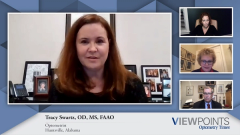

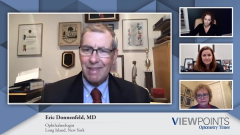
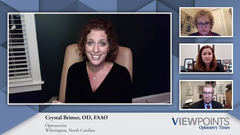
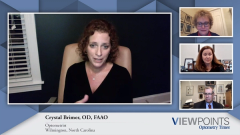
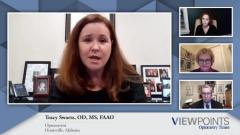

















































.png)


